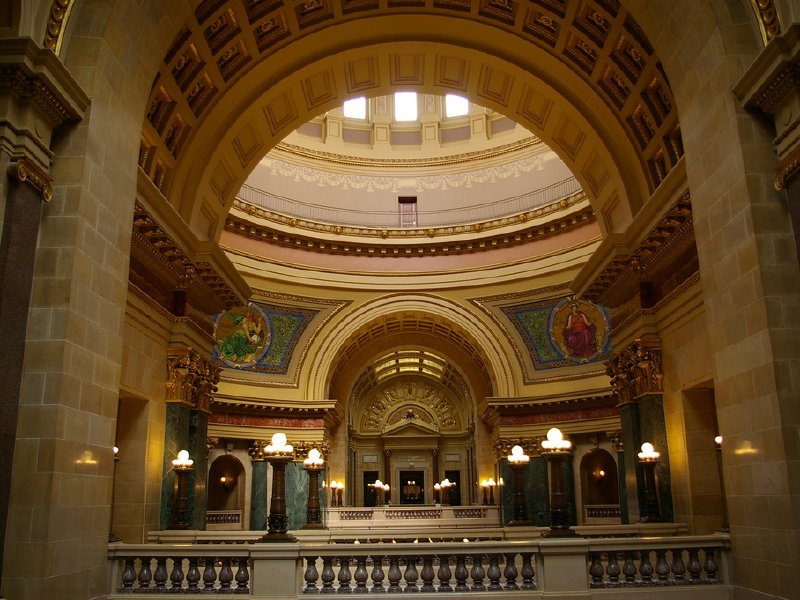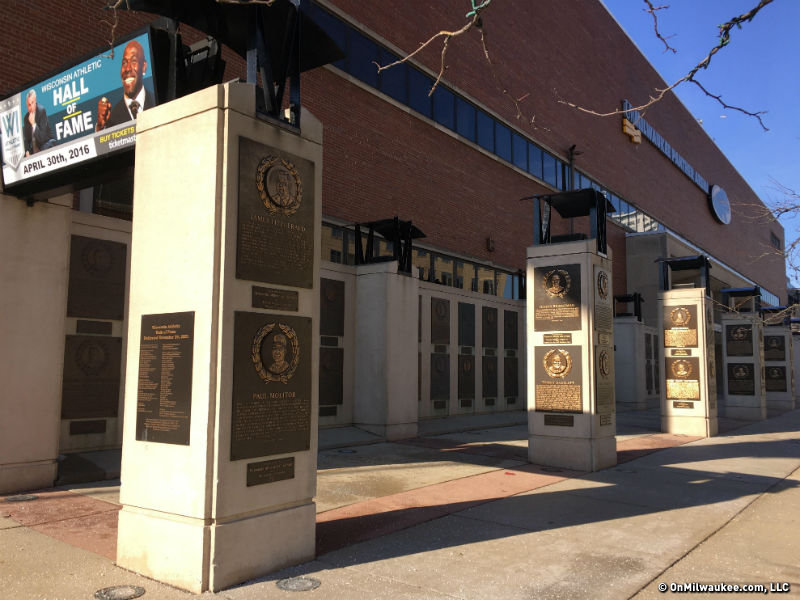It's Madison Week at OnMilwaukee.com. We sent our editorial staff to check out bars, restaurants, retail outlets and cultural venues in order to uncover some of the best of Wisconsin's second-largest city.
MADISON -- When he worked as a broadcast meteorologist, Jim Ott spent much of his time in TV studios designed to look more impressive than they really were.
Now that he's a state representative, the Republican from the 23rd Assembly District works in what many consider to be the most impressive structure in the state.
"We have one of the most beautiful capitol buildings in the country," Ott told OnMilwaukee.com in a recent e-mail. "And every resident of the state should have the opportunity to take a tour."
That begs a question: When was the last time you entered the Capitol?
While hundreds of schoolchildren, retirees and members of civic organizations may tour the facility on a given day, many people -- including some who walk or drive past the building regularly -- haven't ventured inside for years.
That's a mistake.
The Capitol, which stands 284 feet, 5 inches tall from the ground floor to the "Wisconsin" statue on top of the dome, is a breathtaking facility that -- thanks to a $150 million renovation completed earlier this decade -- combines modern functionality while retaining many elements of the original 1917 construction.
If you haven't visited in a while, you owe it to yourself to check out the murals, gold leaf trim and marble and stone work that make the building seem like a work of art.
In addition to housing the Legislature and Senate chambers and offices, the Capitol is home to the State Supreme Court. The court chambers are decorated in German and Italian styles and features four murals by artist Albert Herter.
The Senate Chamber is marked by a colorful skylight and a mural by Kenyon Cox that depicts the opening of the Panama Canal. The Assembly Chamber, located down the hall, has a 30-foot skylight and a mural by Edwin Blashfield that symbolizes Wisconsin's past, present and future.
The walls and ceilings of the governor's conference room are covered 26 paintings by Hugo Ballin.
In 2001, the National Park Service described the Capitol in its National Historic Landmark summary listing:
"The Wisconsin State Capitol is nationally significant as an excellent example of Renaissance Revival architecture, as interpreted through American Beaux-Arts sensibilities. Reflecting the aesthetic of an era spanning from the late nineteenth into the early 20th century, the building is a premier example of the American Beaux-Arts and also represents a national movement to construct monumental state capitols patterned after the National Capitol in Washington. As with the best examples of governmental buildings, the vocabulary of form was derived from buildings of the Renaissance and Baroque periods of European architecture, yet the classically derived iconography of the Wisconsin State Capitol has been given a regional theme. Classical wreaths and garlands of oak leaves provide a prominent motif in the corridors and a celebration of the bounty of mining, agriculture and Wisconsin’s waterways is depicted in the murals and sculptural program. The Capitol is a seminal and highly intact example of the architectural values that underpin the American Beaux-Arts tradition."
Construction of the Capitol began late in 1906 and was completed in 1917. The cost was $7.25 million. Other tidbits gleaned from a recent tour included:
The Capitol is three feet shorter than the nation's capitol in Washington, D.C.
Daniel Chester French of New York sculpted the "Wisconsin" statue on the dome out of hollow bronze covered with gold leaf. The lady in the 15-foot, three-ton statue holds a globe in her left hand and her right arm is outstretched. She wears a helmet with the state animal, the badger, on top.
Much of the furniture in the Capitol is modern, but designed to look like old oak.
A state law, passed in 1990, prohibits any building within one mile of the capitol from being taller than the base of the columns surrounding and supporting its dome.
Some of the stones used in the building contain fossils. The second flight of stairs in the north wing, on the left side of the grand staircase, fourth step from the bottom, contains a starfish fossil.
The remains of Old Abe, the Civil War eagle of the 8th Wisconsin Regiment, now depicted on the shoulder patch of the 101st Airborne, were destroyed in the 1904 fire. A replica tribute sits above the Assembly floor.
The Capitol has 705 rooms, 714 exterior windows, 1,608 doors, and 2,782 steps.
The Capitol is open to the public from 8 a.m. to 6 p.m. weekdays and from 8 a.m. to 4 p.m. weekends and holidays. Free tours are offered daily, except New Year's Day, Easter, Thanksgiving, Christmas Eve and Christmas.
Groups of 10 or more can make on-line reservations or call (608) 266-0382.
Host of “The Drew Olson Show,” which airs 1-3 p.m. weekdays on The Big 902. Sidekick on “The Mike Heller Show,” airing weekdays on The Big 920 and a statewide network including stations in Madison, Appleton and Wausau. Co-author of Bill Schroeder’s “If These Walls Could Talk: Milwaukee Brewers” on Triumph Books. Co-host of “Big 12 Sports Saturday,” which airs Saturdays during football season on WISN-12. Former senior editor at OnMilwaukee.com. Former reporter at the Milwaukee Journal Sentinel.







